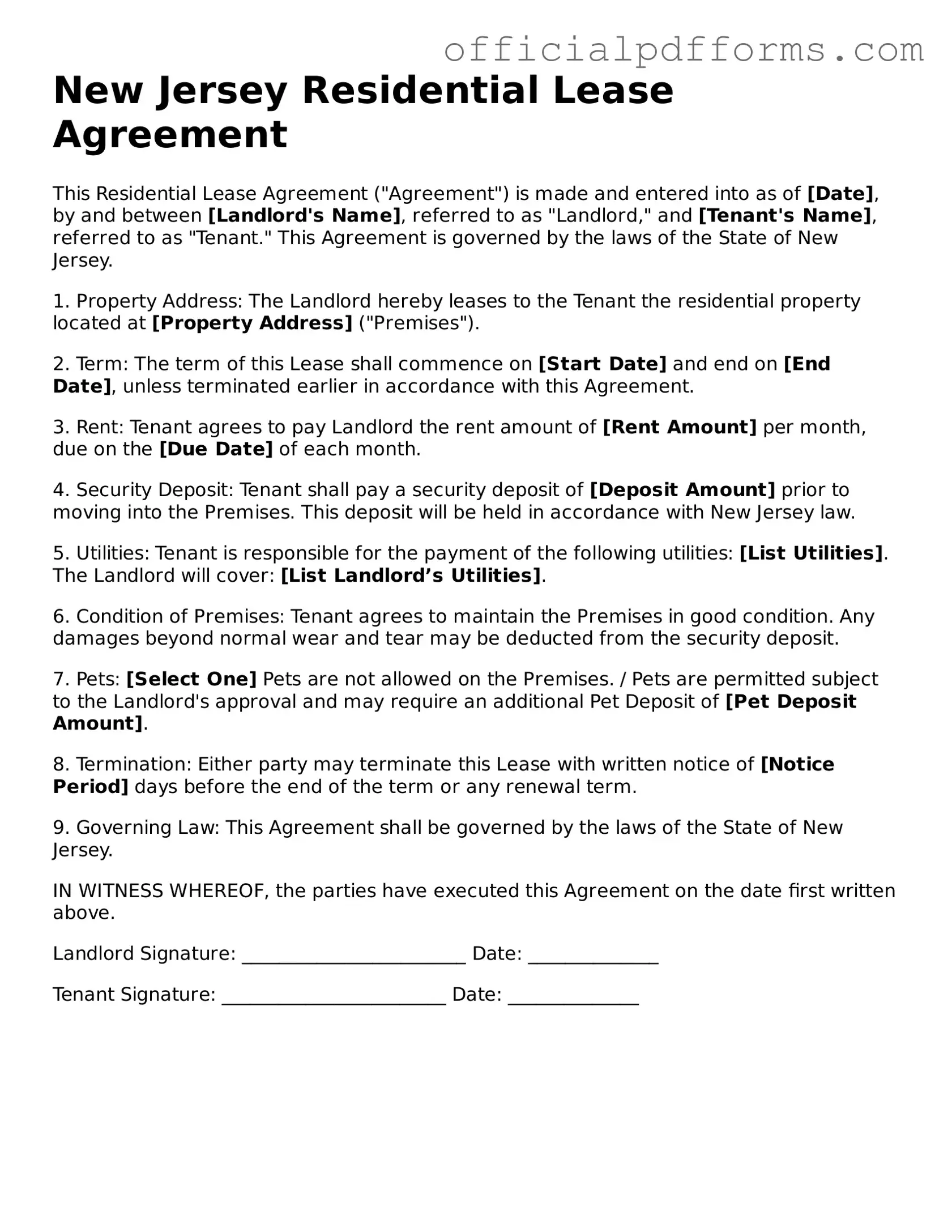What is a New Jersey Residential Lease Agreement?
A New Jersey Residential Lease Agreement is a legal document that outlines the terms and conditions between a landlord and a tenant for renting a residential property. This agreement specifies the rights and responsibilities of both parties, including rent amount, lease duration, security deposit, and maintenance obligations.
What should be included in the lease agreement?
The lease agreement should include the following key components:
-
Names of the parties:
Clearly state the names of the landlord and tenant.
-
Property description:
Include the address and a brief description of the rental property.
-
Lease term:
Specify the start and end dates of the lease.
-
Rent details:
Outline the monthly rent amount, payment due date, and acceptable payment methods.
-
Security deposit:
State the amount of the security deposit and the conditions for its return.
-
Maintenance responsibilities:
Clarify who is responsible for repairs and maintenance.
How long does a residential lease typically last?
A residential lease in New Jersey can vary in duration. Common terms include:
-
One year:
This is the most common lease term.
-
Month-to-month:
This offers flexibility for both parties, allowing the lease to continue until either party provides notice to terminate.
-
Short-term leases:
These can be for a few months or even weeks, often used for temporary housing situations.
Can a landlord raise the rent during the lease term?
Generally, a landlord cannot raise the rent during the lease term unless the lease agreement specifically allows for it. If the lease is month-to-month, the landlord can raise the rent by providing proper notice, typically 30 days in New Jersey. Always check the lease terms for any specific clauses regarding rent increases.
What happens if a tenant wants to break the lease early?
If a tenant needs to break the lease early, they should review the lease agreement for any early termination clauses. Often, tenants may be required to give notice and may have to pay a penalty or continue paying rent until a new tenant is found. Communication with the landlord is essential to discuss possible options.
Is a written lease agreement necessary?
Yes, having a written lease agreement is highly recommended. While verbal agreements can be legally binding, they are difficult to enforce and can lead to misunderstandings. A written lease provides clear documentation of the terms agreed upon, protecting both the landlord's and tenant's rights.
